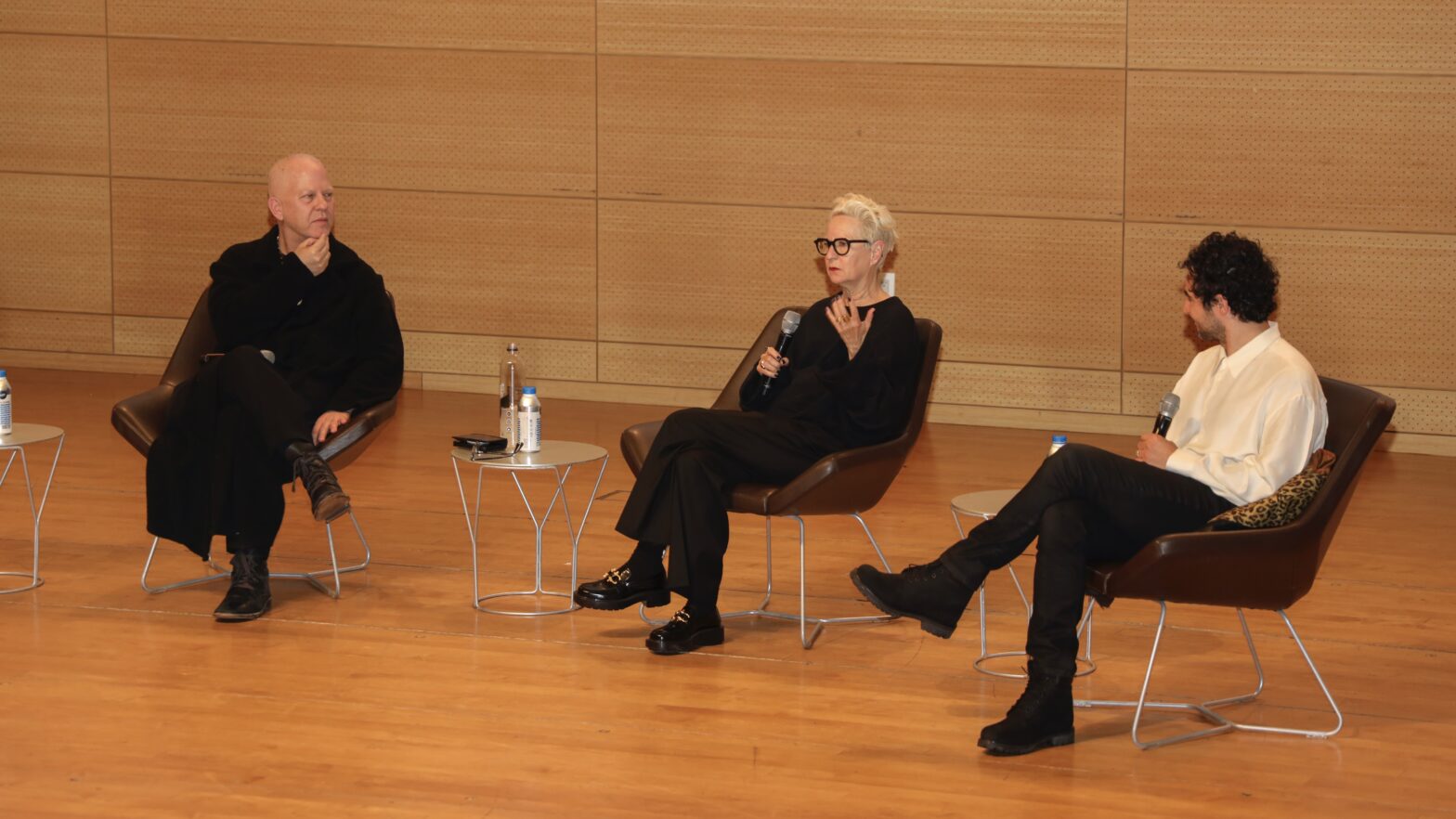When asked to describe the process behind creating the second season of “Feud,” Ryan Murphy proudly declared to the Tishman Auditorium audience, “We just made a murderer’s row list of women that we wanted to work with.”
Titled “Feud: Capote vs. the Swans,” Ryan Murphy’s latest installment of “Feud” focuses on the rivalry between real-life writer Truman Capote and the glamorous, high-society women known as “the Swans.” The new season premiered Jan. 30 on Hulu. New episodes air on Wednesdays, with a star-studded cast that includes Naomi Watts, Chloë Sevigny, Demi Moore and Molly Ringwald.
With a glitzy 1970s backdrop, elaborate costumes, and loads of drama in mind, Murphy knew he wanted to work with the best when creating this season of “Feud”. The best in question? — Zac Posen and Lou Eyrich.
These three talents came together for a panel hosted in the Tishman Auditorium on Jan. 24, with Parsons School of Design’s BFA Fashion Design Director, Marie Genevieve Cyr, as the moderator.
Murphy is recognizable for his work in fan-favorites such as “Glee,” “American Horror Story,” and more recently, “Dahmer – Monster: The Jeffrey Dahmer Story.” Posen is a costume designer, former Project Runway host, and the newly appointed creative director at GAP. And Murphy’s work is rarely seen without Eyrich’s touch — she’s acclaimed for her work as both a wardrobe assistant and costume designer. Add in Watts, Sevigny, Moore, and Ringwald, and the show is packed with A-list icons.
“Every single one of our first choices said yes, and I think it was because it was also an opportunity for all of these women who have been icons themselves for 30, 40, 50 years,” Murphy said.
The plot follows Truman Capote, a real-life writer portrayed by Tom Hollander, who befriends four high-society women and becomes their trusted confidant. However, it goes south when Capote publishes a scathing novel filled with all their secrets.
In order to avoid cliches and pull off the 70s feel that the show achieved, the process began with a deep dive into the photographic archives — or the “pre-sweatpants era,” as Murphy deemed it. When approaching the show’s costume design, they wanted to exude a sense of formality but still maintain historical accuracy.
“It’s a hard show to do,” Murphy said. “The first season was about Joan Crawford versus Bette Davis. And to find the right feud is hard because feuds are truly about love turned to hate.”
Murphy has always been a fan of the 70s, but not the stereotypical 70s that we’re accustomed to today. For “Capote vs. the Swans,” he found the prime opportunity to explore the era he was so fascinated with.
“I’ve always loved that period and not the cliche of the 70s, which is the bell-bottoms,” Murphy said. “It was like the middle part, ‘74, ‘75, ‘76 that was very classic, headed into disco.”
But with such a talented cast and an even more compelling narrative, they knew they needed a powerful wardrobe too.
“The design process first started with a quick meeting on set. The three of us had a pow-wow,” Posen said. “I kind of went material shopping … I started draping three-dimensional, full pieces with a collage, 3D sketches, and Ryan wanted illustrations. I wanted to present something where you could feel [the designs] almost as creatures in an evil aquatic pond.”
Coining it the world of “Ryan Murphy fabulosity,” Posen wanted to give each of the costumes their own narrative. With this in mind, Eyrich crafted inspiration boards, comparing and contrasting this historical period with the modern world.
“We wanted the costumes to have a life, not look like something that could be on the Smithsonian channel,” Murphy said.
In an industry that’s always changing with the times, the show needed to be something that marked this generational distinction. “Feud: Capote vs. the Swans” may have focused on the feud, but it also reflected the golden age of society. Think fancy galas, fine dining, and lots and lots of tweed and faux fur.
“Young people look for inspiration that dates back to even before the 90s,” Murphy said. “It’s history, it’s looking back to go forward.”








Leave a Reply